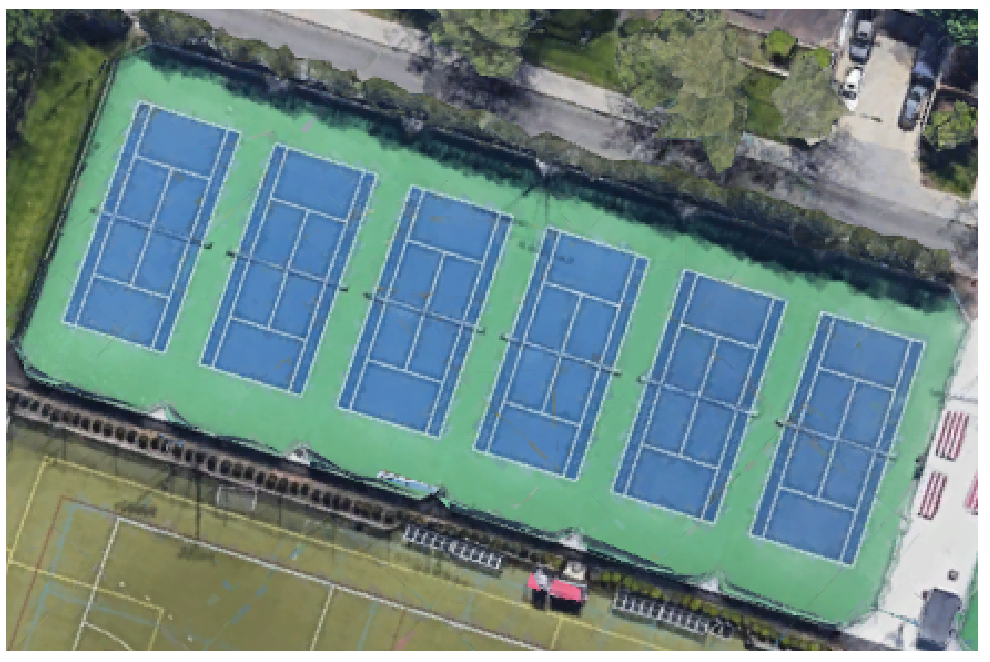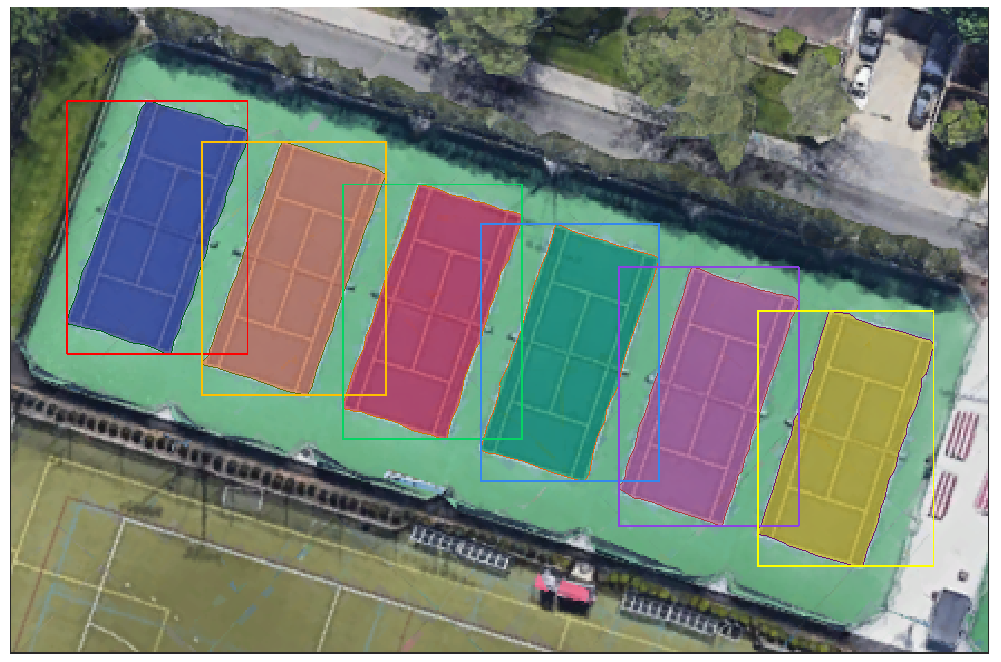

Object Extraction |
Object extraction of the image, that is, to identify the object contour at the pixel level. The task of object detection is to classify individual objects and locate them with a minimal circumscribing matrix; semantic segmentation only classifies each pixel and does not distinguish individual objects. Object extraction (instance segmentation) needs to correctly identify all objects in the image and segment different objects at the same time. The example combines object detection and semantic segmentation techniques in computer vision tasks. It has been widely used in image analysis, and is often used to solve the problem of segmentation and extraction in object-intensive scenes, such as city building segmentation, court segmentation, port ship segmentation and so on.


Figure 1: Original image Figure 2: Tennis court extraction
Image datasource: Required parameter, specifying datasource path of image data set to be analyzed, such as C:\Data\Image.udb. Currently, only three formats are supported: udb, udbx, and tiff. It can also be specified by selecting a registered data set.
Image dataset: Required parameter, specifying the name of the image dataset to be analyzed, such as dsm. When the input data source is When tiff, this parameter does not participate in the analysis.
Model File: Required parameter, the path of the trained model file used for analysis, such as C:\Data\models.sdm. It can also be specified by selecting a registered model.
Probability threshold: Optional parameter, keep the lowest value of the detection probability of the target, and only keep the target whose prediction probability is higher than this value. The default value is 0.5.
De-duplication threshold: Optional parameter, the threshold for removing duplicate targets. The default is 0.3.
Return Minimum Bounding Rectangle: Returns the minimum bounding rectangle of the object. The default is false.
User-defined result datasource name: Optional parameter. Check this option to specify the datasource name for storing analysis results, such as Result. The data source is created when it does not exist.
Result dataset: Optional parameter, output object extraction result dataset name. The default is the multiclassify_result.
Publish results as map services: Check this option to publish the object extraction results as map services.
Publish results as data services: Check this option to publish the object extraction results as data services.